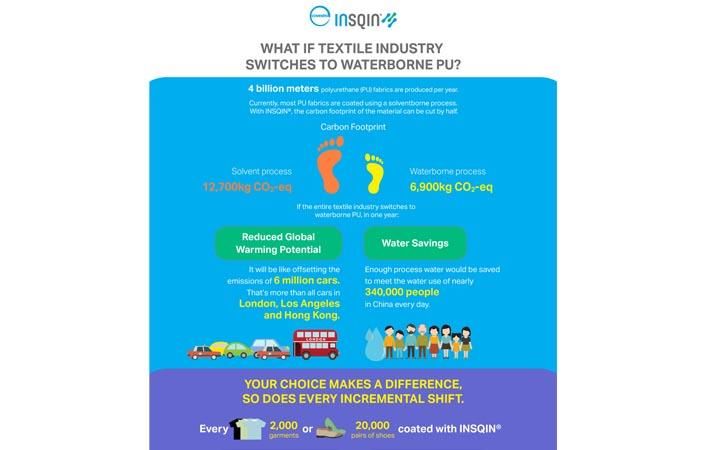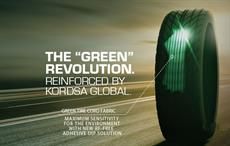A study has shown that Covestro’s Insqin is a more sustainable way to produce coated textiles than conventional technologies. It found that using waterborne polyurethane (PU) technology for manufacturing PU synthetic, a key material in textiles sector, substantially reduced carbon footprint, as compared to conventional, solvent-based technology.
The life-cycle assessment (LCA) study showed that, from the cradle to material factory gate, the Global Warming Potential for 1,000 square metres of waterborne PU synthetic is 45 per cent less than that of solvent-based PU synthetic.A study has shown that Covestro's Insqin is a more sustainable way to produce coated textiles than conventional technologies. It found that using waterborne polyurethane (PU) technology for manufacturing PU synthetic, a key material in textiles sector, substantially reduced carbon footprint, as compared to conventional, solvent-based technology. #
An independent third party was engaged to conduct a critical review of the LCA study and results in accordance with International Organisation for Standardisation (ISO) standards 14040:2006 and ISO 14044:2006.
Nick Smith, Covestro’s global head of textile coatings, says: “The LCA provides an extra layer of assurance in the environmental performance of Insqin. It shows brands that this technology can help them reach their sustainability targets. Achievements in carbon footprint reduction will be important to not only fashion and sportswear brands, but also the automotive and furniture industries.”
The LCA delivers high-quality data on the environmental benefits of waterborne PU. In addition, the technology offers health and safety benefits, altogether enabling customers to make increasingly informed decisions on PU material sourcing.
The study compared a comprehensive range of parameters to assess the environmental performance of waterborne PU from the extraction of raw materials to coated fabric production, versus that of the conventional technology, which involves the use of the solvent dimethylformamide (DMF).
According to the results of the LCA, 1,000 square metres of PU synthetic made with Insqin has a Global Warming Potential of 6,900 kilogrammes carbon dioxide-equivalent, compared to 12,700 kilogrammes carbon dioxide-equivalent in the case of solvent-based PU leather.
The impact of this reduction is so significant that if the entire textile industry switched to using Covestro’s waterborne PU technology, the reduction of greenhouse gas emissions would be equivalent to taking every car off the road in Beijing, or in London, Hong Kong and Los Angeles combined.
While Insqin itself has a significantly lower carbon footprint than solventborne equivalents, the detailed study revealed that 85 per cent of the reduction in Global Warming Potential is due to the lower energy consumption of the dry textile coating process that is enabled by the waterborne PU, and that replaces conventional wet processing. In other words, the real benefit of the technology lies in the process changes it makes possible.
Using Insqin to coat textiles with PU also has the potential to reduce acidification in waters and soil by 20 per cent, compared to conventional technology.
According to Covestro’s previous internal study, the production of PU synthetics with Insqin uses 95 per cent less process water than with conventional PU. The water savings achieved can have significant social impact on water-scarce manufacturing countries. If the entire textile industry switched to Insqin, enough water would be saved everyday to meet the daily water use of nearly 340,000 people in China.
This work demonstrates how innovation in chemicals can bring far-reaching benefits by enabling change in process technologies to bring about significant progress in overall innovation in the textiles industry.
Dr. Lydia Simon, global sustainability manager for Coatings, Adhesives and Specialties at Covestro, says: “Life cycle thinking is crucial if we are to overcome key challenges such as climate change. Life cycle studies help to quantify the potential of technologies to reduce environmental impacts and thus contribute to more sustainable solutions.” (SV)
Fibre2Fashion News Desk – India


